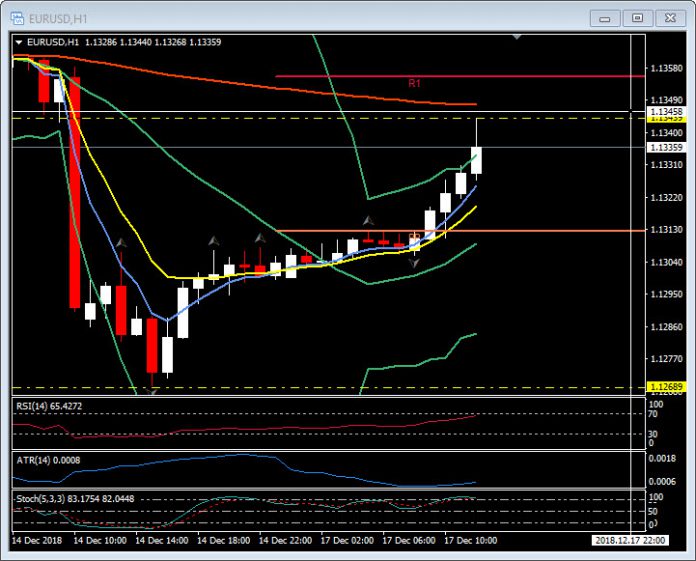EURUSD, H1
Eurozone Dec HICP inflation was revised down to 1.9% y/y from 2.0% y/y reported initially. This is still in line with ECB’s definition of price stability, thus backing Draghi’s confirmation of the phasing out of net asset purchases with this month’s round of buying. Core inflation remains much lower at 1.0% y/y, but with wage growth picking up, ECB is somewhat more confident that underlying inflation will move towards the central bank’s target range. Still at the same time, the risks to the growth outlook are starting to shift to the downside, which means ECB remains uncommitted when it comes to further steps towards policy normalisation.
The Eurozone posted a seasonally adjusted trade surplus of EUR 12.5 bln in October, down from a survey of EUR 13.0 bln in September that was itself revised down from EUR 13.4 bln reported initially. Exports improved over the month, but so did imports and unadjusted data show an accumulated trade surplus of “just” EUR 156.0 bln in the first ten months of 2018, compared to EUR 187.0 bln in the corresponding period last year. The troubles in the auto industry are clearly part of the problems and not just due to rising protectionism globally. Overall export growth was still a robust 4% y/y in the Jan-Oct period, although this was dwarfed by the 7% rise in import growth. The latter is impacted by base effects from oil prices, but nevertheless highlights that the Eurozone and Germany in particular can’t rely on exports to prop up overall growth, especially with Brexit looming on the horizon, just 100 days away.
The data releases helped lift EURUSD to session highs at 1.1344 just shy of the significant resistance zone at 1/1348-55 (R1 and the 200-period moving average). Initial support is the daily pivot and 20-period moving average at 1.1313, the psychological 1.1300 and the lower Bollinger Band and Friday’s low at 1.1269.
The EUR also got some seasonal cheer from Italy where Prime Minister Conte managed to get populist leaders behind his 2.04% deficit target for next year, which he already pitched to Brussels last week. Compared to the previous fiscal plan, which was based on a projected deficit to GDP ratio of 2.4%, the new plan incorporates around EUR 3 bln of additional funds and cut the projected cost of new welfare payments to EUR 7.1 bln from EUR 9 bln. The Italian 2019 budget stand-off, like Brexit, may be entering is final key phase.
Click here to access the HotForex Economic calendar
Stuart Cowell
Head Market Analyst
HotForex
Disclaimer: This material is provided as a general marketing communication for information purposes only and does not constitute an independent investment research. Nothing in this communication contains, or should be considered as containing, an investment advice or an investment recommendation or a solicitation for the purpose of buying or selling of any financial instrument. All information provided is gathered from reputable sources and any information containing an indication of past performance is not a guarantee or reliable indicator of future performance. Users acknowledge that any investment in FX and CFDs products is characterized by a certain degree of uncertainty and that any investment of this nature involves a high level of risk for which the users are solely responsible and liable. We assume no liability for any loss arising from any investment made based on the information provided in this communication. This communication must not be reproduced or further distributed without our prior written permission.


















